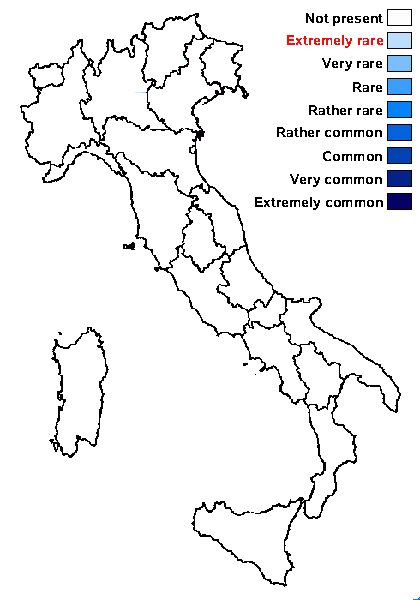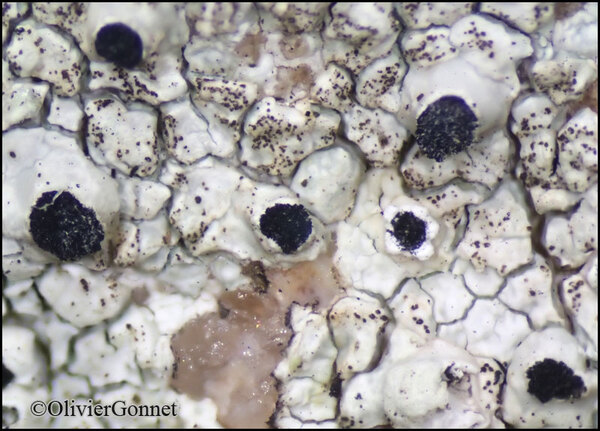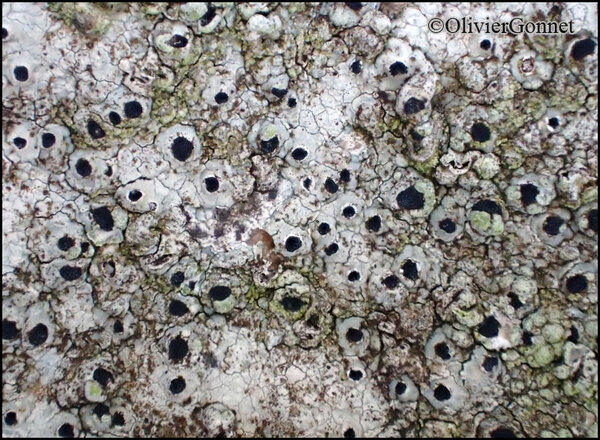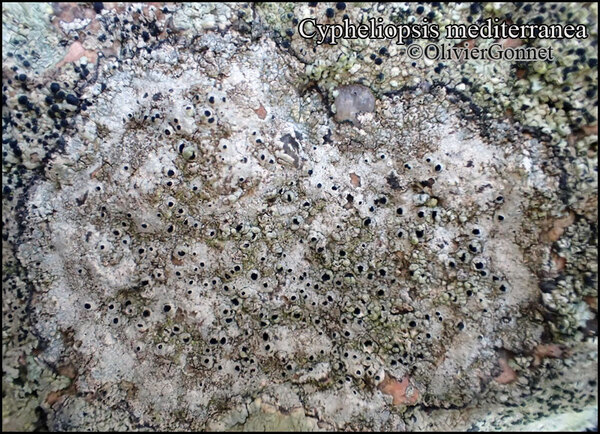Cypheliopsis mediterranea (B. de Lesd.) Nádv.
Stud. Bot. Čechoslov., 5: 126, 1942. Basionym: Cyphelium mediterraneum B. de Lesd - in Crozals, Ann. Soc. Hist. nat. Toulon, 10: 90, 1924
Synonyms:
Distribution:
Description: Thallus crustose, episubstratic, rather thick, white to grey-white, areolate-verrucose, the sterile areoles flat and smooth, the fertile ones convex, sometimes almost conical, with crenulate-sinuose margins. Medulla white, I-. Apothecia 1-2 mm across, developing on the fertile areoles, with an epruinose, black mass of spores (mazaedium) accumulating on the disc; hypothecium pale brown. Ascospores 1-celled, dark brown to almost black, globose or subglobose, 10-15 μm wide, with a verrucose wall. Photobiont chlorococcoid. Spot tests: K-, C-, KC-, P-. Chemistry: probably without lichen substances. Note: a very poorly known silicicolous species growing on more or less coastal rocks subject to humid maritime winds, recorded from two stations only, one of which is in Corsica. The species is practically identical to Thelomma siliceum and has a similar ecology, differing in the negative reaction to KC. It should probably be transferred to Thelomma, and it could even prove to be a chemotype of Th. siliceum. To be looked for in Tyrrhenian Italy.
Growth form: Crustose
Substrata: rocks
Photobiont: green algae other than Trentepohlia
Reproductive strategy: mainly sexual
Most common in areas with a humid-warm climate (e.g. most of Tyrrenian Italy)
Poorly known taxon in need of further study

Predictive model

Courtesy Danièle et Olivier Gonnet - Source: https://www.afl-lichenologie.fr/Photos_AFL/Photos_AFL_C/Textes_C5/Cypheliopsis_mediterranea.htm
France, Bonifacio, île Cavallo - Corse - (deuxième récolte mondiale)
5/12/2014
Growth form: Crustose
Substrata: rocks
Photobiont: green algae other than Trentepohlia
Reproductive strategy: mainly sexual
Most common in areas with a humid-warm climate (e.g. most of Tyrrenian Italy)
Poorly known taxon in need of further study

Predictive model

 Index Fungorum
Index Fungorum
 GBIF
GBIF



